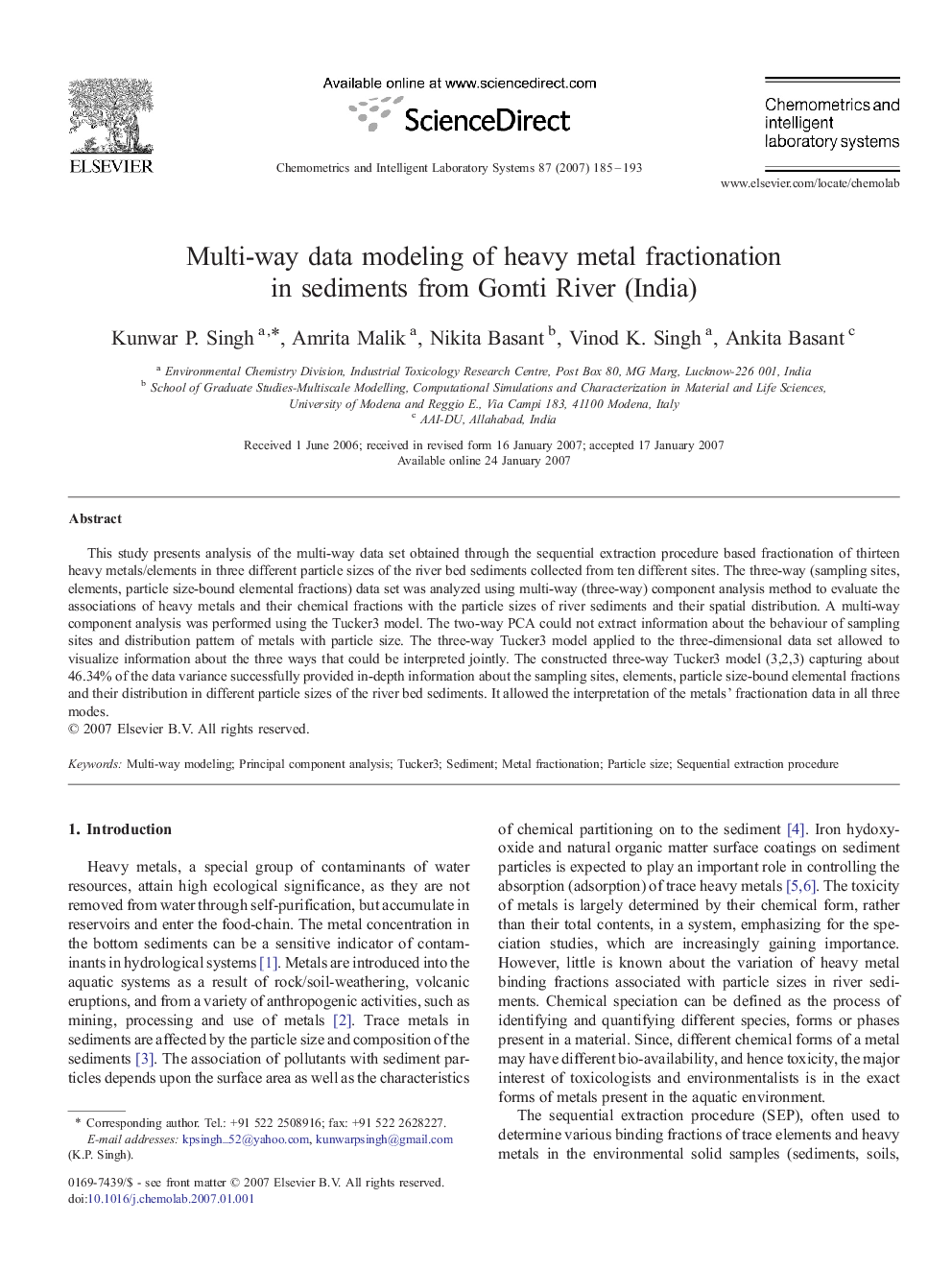| Article ID | Journal | Published Year | Pages | File Type |
|---|---|---|---|---|
| 1181709 | Chemometrics and Intelligent Laboratory Systems | 2007 | 9 Pages |
This study presents analysis of the multi-way data set obtained through the sequential extraction procedure based fractionation of thirteen heavy metals/elements in three different particle sizes of the river bed sediments collected from ten different sites. The three-way (sampling sites, elements, particle size-bound elemental fractions) data set was analyzed using multi-way (three-way) component analysis method to evaluate the associations of heavy metals and their chemical fractions with the particle sizes of river sediments and their spatial distribution. A multi-way component analysis was performed using the Tucker3 model. The two-way PCA could not extract information about the behaviour of sampling sites and distribution pattern of metals with particle size. The three-way Tucker3 model applied to the three-dimensional data set allowed to visualize information about the three ways that could be interpreted jointly. The constructed three-way Tucker3 model (3,2,3) capturing about 46.34% of the data variance successfully provided in-depth information about the sampling sites, elements, particle size-bound elemental fractions and their distribution in different particle sizes of the river bed sediments. It allowed the interpretation of the metals’ fractionation data in all three modes.
